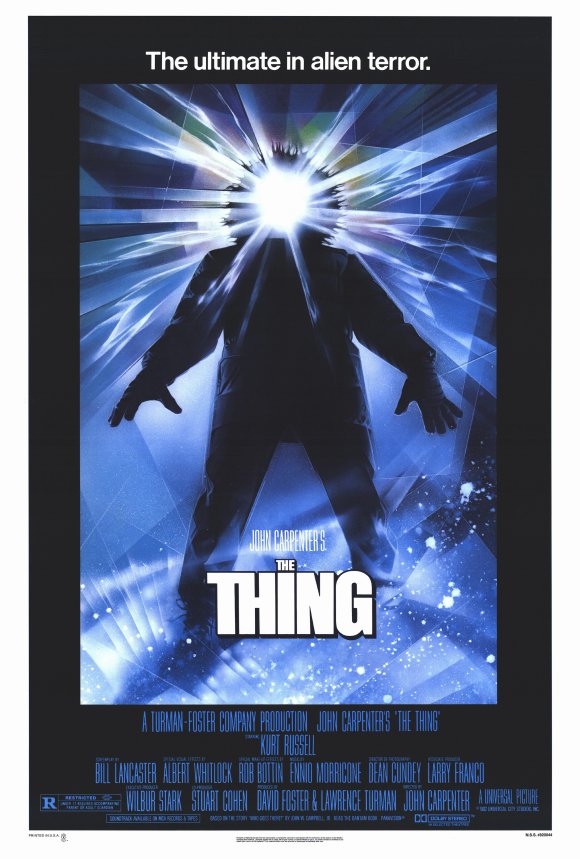SYNOPSIS
At the Amundsen’Scott South Pole Station, most personnel leave by the middle of February, leaving a few dozen “winter-overs” (mostly support staff plus a few scientists) who keep the station functional through the months of Antarctic night. The winter personnel are isolated between mid-February and late October. After the last flight has left for the winter, an annual tradition is a double feature viewing of The Thing and The Shining.
So, following yesterday’s blog on The Shining, its only right to examine John Carpenter’s The Thing next. Based on John W. Campbell, Jr.’s novella, Who Goes There?, the movie is about a parasitic , extraterrestrial lifeform that assimilates organisms at the molecular level, thus allowing it to mimic the host phenotypically.
Set in Antarctica, The Thing begins with a Norwegian helicopter pursuing an Alaskan malamute to an American research station. When the last surviving Norwegian is shot and killed, the Americans go to the Norwegian base only to find it burned to the ground. MacReady and the crew learn that the Malamute was alien, and before they could kill it, the thing begins to assimilate the other dogs and members of the research team.
Considered by Carpenter to be the first part of an apocalyptic trilogy along with Prince of Darkness and In the Mouth of Madness, The Thing pays homage to Dracula, depicting the trials of MacReady (modern day Van Helsing), who leads the team as they try to capture and kill the inhuman scourge before it can hibernate and move beyond the continent.
THE PSYCHIATRY OF THE THING
We discover that the thing was trying to freeze itself and hibernate, thus introducing the notion of dyssomnias; sleep abnormalities in the amount, quality, or timing of sleep involving abnormalities in mechanisms generating sleep-wake states (as opposed to parasomnias which are abnormal behaviors occurring in association with/around the time of sleep such as sleep walking). One dyssomnia, Non-24 Hour Sleep-Wake Type (a Circadian Rhythm Sleep-Wake Disorder), is characterized by abnormal synchronization between the 24-h light-dark cycle and the endogenous circadian rhythm. Given that a) the setting of the film is the Antarctic night, b) the alien’s circadian rhythm is longer than 24 hours, c) the alien needs to hibernate, The Thing may be viewed as an exercise in the Sleep-Wake Disorders.
The Thing can also be interpreted as a case study of “mass paranoia;” with imminent danger behind every familiar face, the film oscillates between hypervigilance and Shared Psychotic Disorder. For example, Blair becomes increasingly paranoid, calculating that if the alien escapes Antarctica, all life on earth will be assimilated within a few years.
In the final scene, MacReady and Childs watch the camp burn and acknowledge the futility of their distrust and share a bottle of scotch. The ambiguous ending is clarified 30 years later by Joss Whedon; in The Cabin in the Woods, the scene revealing the “Fail” in Sweden most likely reveals the cataclysmic outcome of The Thing.
